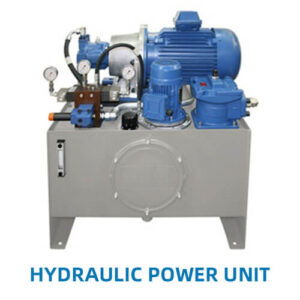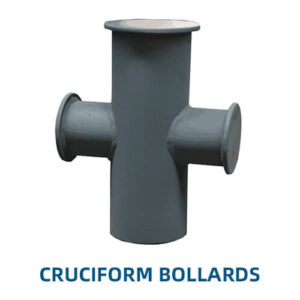Key Features of Water Sports Life Jackets:
- Design and Construction:
- Lightweight and Buoyant Foam: Water sports life jackets are typically made from lightweight, high-density foam that provides sufficient buoyancy without adding unnecessary bulk. The foam is designed to keep the wearer afloat while allowing for active movement.
- Form-Fitting Design: These life jackets are designed to fit snugly to the body, reducing drag and allowing for greater mobility. The form-fitting design helps prevent the jacket from riding up or shifting during intense activity.
- Segmented Panels: Many water sports life jackets feature segmented foam panels, which allow the jacket to flex and move with the wearer’s body. This enhances comfort and range of motion, making it easier to perform dynamic movements.
- Comfort and Fit:
- Adjustable Straps: Most water sports life jackets come with adjustable straps around the chest and waist, allowing for a customized fit. This ensures that the jacket stays securely in place during activity.
- Zipper Closures: Many models include a front zipper closure for easy on-and-off access, with additional buckles or straps to secure the jacket.
- Ergonomic Design: Designed to minimize chafing and discomfort, the life jackets often feature soft, padded lining materials that enhance comfort during prolonged wear.
- Low-Profile Design: To ensure minimal interference with athletic movements, water sports life jackets often have a low-profile design that sits close to the body without feeling restrictive.
- Safety Features:
- Adequate Buoyancy: While they are more compact than other types of life jackets, water sports life jackets still provide enough buoyancy to keep the wearer afloat. They are usually classified as Type III PFDs, which means they are suitable for calm, inland waters where rescue is likely to be quick.
- Bright Colors and Reflective Elements: Many water sports life jackets are available in bright, high-visibility colors such as neon green, yellow, or orange. Reflective strips or patches may also be included to enhance visibility in low-light conditions.
- Quick-Release Mechanism: Some life jackets designed for extreme sports like whitewater kayaking or jet skiing include quick-release buckles that allow the wearer to easily remove the jacket if it becomes necessary.
- Specialized Features:
- Pockets and Attachment Points: Some life jackets feature pockets for small items like keys, whistles, or a small waterproof radio. Attachment points may be included for securing a knife, whistle, or other safety gear.
- Drainage System: To prevent water from accumulating inside the jacket, many models feature built-in drainage systems that allow water to quickly escape, keeping the jacket light and comfortable.
- Impact Protection: Certain water sports life jackets offer additional padding or reinforced areas to provide impact protection, which is especially important for sports like wakeboarding or jet skiing where falls at high speeds are common.
- Applications:
- Wakeboarding and Water Skiing: These sports require a life jacket that provides a snug fit and excellent freedom of movement, allowing the wearer to perform tricks and maneuvers without restriction.
- Jet Skiing: For jet skiing, a life jacket that offers both buoyancy and impact protection is essential, given the high speeds and potential for falls.
- Kayaking and Paddleboarding: These activities require a life jacket that is comfortable for long periods of wear and offers good arm mobility for paddling.
- Tubing and Rafting: In these activities, a life jacket must stay securely in place even in turbulent water conditions.
- Certification and Standards:
- Coast Guard Approval: In many countries, including the United States, water sports life jackets are required to be approved by the relevant maritime authority, such as the U.S. Coast Guard (USCG). This ensures that the life jacket meets specific safety standards for buoyancy and performance.
- ISO Standards: In addition to USCG approval, some life jackets are certified to meet International Organization for Standardization (ISO) standards, which are recognized worldwide.
Advantages of Water Sports Life Jackets:
- Enhanced Mobility: Designed to allow for a full range of motion, making them ideal for active sports.
- Comfortable Fit: Form-fitting and ergonomic designs reduce chafing and discomfort, even during extended wear.
- Safety Without Bulk: Offers sufficient buoyancy and protection without the bulkiness of traditional life jackets, making them more suitable for high-energy activities.
Considerations When Choosing a Water Sports Life Jacket:
- Proper Fit: A snug fit is essential for safety and comfort. Be sure to choose the correct size and adjust the straps to secure the jacket properly.
- Activity-Specific Features: Consider the specific requirements of your chosen water sport, such as impact protection for wakeboarding or additional pockets for kayaking.
- Regulatory Compliance: Ensure that the life jacket meets the necessary safety standards and certifications for your location and activity.
A Water Sports Life Jacket is an essential piece of safety equipment for anyone participating in water-based activities. With a focus on comfort, mobility, and safety, these life jackets are designed to meet the demands of active water sports enthusiasts, providing peace of mind while allowing for maximum enjoyment of the activity. Whether you’re skimming across the water on a wakeboard, paddling a kayak, or riding a jet ski, a well-chosen water sports life jacket is a key component of your safety gear.






